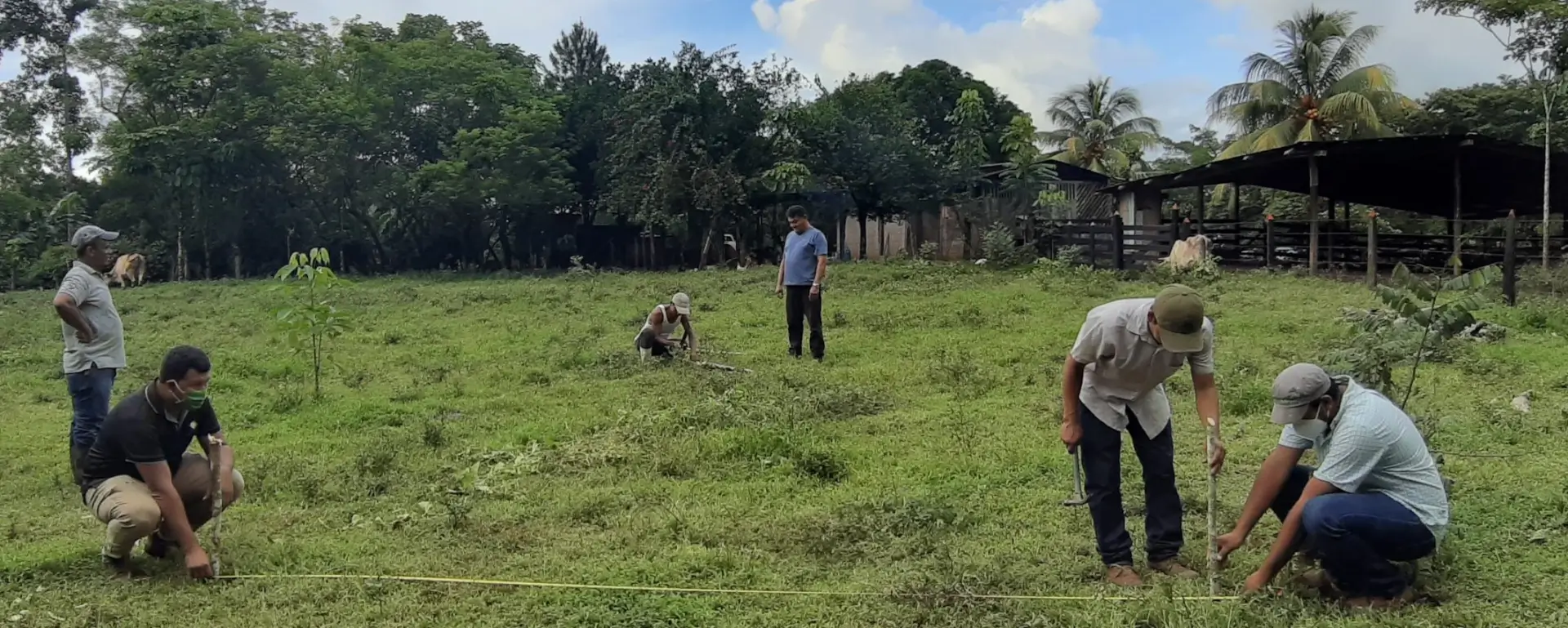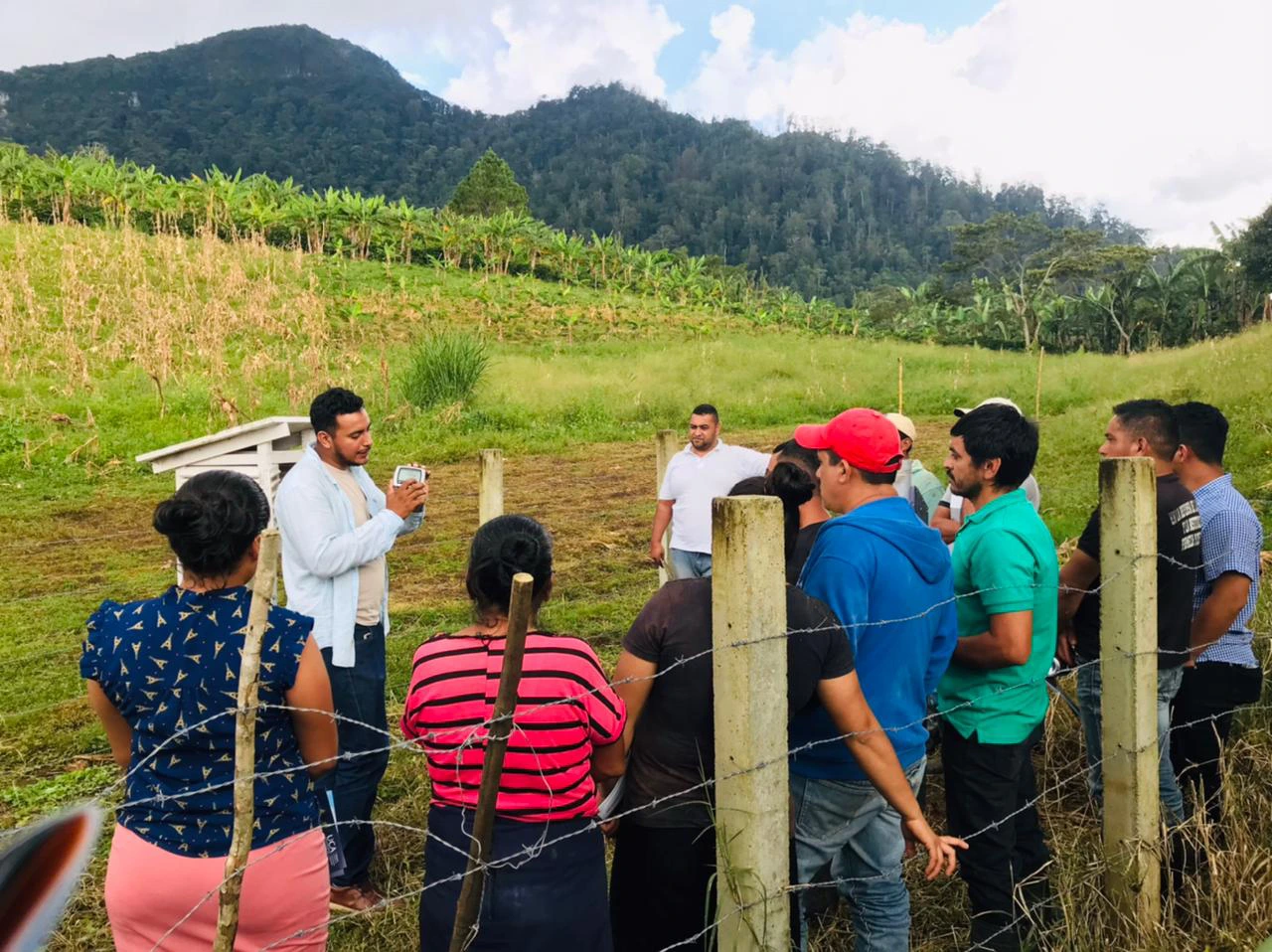
Joherying Aguinaga Arauz listened intently as the instructor described how to accurately record data from weather stations. The 21-year-old from the community of Manceras in Rio Blanco, Nicaragua was keen to participate in the citizen scientist programme. Joherying’s family owns 10 hectares of land in central Nicaragua. The family grows some basic grains and cacao and raises cattle.
It is the cattle raising that concerns Joherying. She knows that the predominant systems of cattle ranching have negative impacts on the environment, so she has become a leader in her community in the search for alternatives. She knows that having better data about the changing climate could help her make an impact as she helps her family transform to more sustainable farming.
In Latin America, cattle ranching can be a driver of deforestation and contribute to climate change, the loss of biodiversity and the dispossession of indigenous people if it is not done in a sustainable way. As part of the Belmont Forum, NORFACE and International Science Council research programme Transformations to Sustainability (T2S), the TRUEPATH: Transforming unsustainable pathways in agricultural frontiers project studied the dynamics which have led to the current environmentally unsustainable cattle development pathway. Ultimately, the project will contribute to identifying ways to slow cattle-driven expansion by identifying innovative pathways toward more sustainable agricultural development in Nicaragua’s agricultural frontier.
To reach their objectives the TRUEPATH team chose to focus on microfinance as a tool to support transformation. ‘Our ultimate goal was to derive a balance with the triple bottom line,’ said Johan Bastiaensen, the project lead and a professor at the Institute of Development Policy of the University of Antwerp.
‘That means combining financial profitability in a way that minimizes social and environmental impact.’
Microfinance has been used since the 1980s to provide small-scale financial services to financially excluded people, primarily in the Global South. But microfinance services do not always address environmental considerations. To correct this, Green Microfinance (GMF) models have been developed to help fulfil environmental sustainability goals while maintaining positive financial and social performance – the so-called ‘triple bottom line’.
TRUEPATH built on existing long-term, ongoing collaborative action research efforts and took GMF one step further. ‘Green Microfinance Plus expands on Green Microfinance by adding components for technical assistance as well as payments for ecosystem services,’ said Johan. ‘We then connect this to a citizen science approach.’
The TRUEPATH team worked with an independent microfinance institution called Fondo de Desarrollo Local (FDL) to review the Green Microfinance Plus model. FDL was created out of the Instituto Nitlapan of the Universidad Centroamericana more than a decade ago and manages its own portfolio. The FDL-Nitlapan/UCA partnership has multiple dimensions, but fundamentally combines credit services provided by FDL with technical and entrepreneurial assistance provided by Nitlapan/UCA.
Despite being in operation for more than a decade, the FDL programme has not achieved the success that had been desired. ‘With TRUEPATH, we wanted to further study the FDL model and determine what the intended beneficiaries actually needed and wanted and how they visualize change,’ said Milagros Romero, a researcher at Nitlapan/UCA and a PhD student at the Institute of Development Policy at the University of Antwerp.
‘We wanted to speak to farmers, credit officers and local technicians to see if they could bring some ideas and alternative visions and what the institutions involved can do to support more just dynamics.’
The Green Microfinance Plus services range from technical and individual advice to more collective interventions for specific innovations. ‘These services can target particular groups such as the poor, youth or female entrepreneur and farmers,’ said Milagros. ‘Or they can target objectives such as mitigation and adaptation to climate change or strengthening collective territorial dynamics.’
In mid-2019, Milagros and colleagues at the Nitlapan/UCA and the environmental non-profit organization Centro Humboldt installed weather stations on farms in the municipalities of Río Blanco and Mulukukú, in the northern agrarian frontier of Nicaragua.
Setting up the weather stations was the first step of the TRUEPATH project’s citizen-science approach. TRUEPATH convened several training workshops to bring ‘weather observers’, like Joherying, together with Nitlapan’s researchers and technical team to discuss the first findings and experiences with the weather stations.
The workshops took a ‘co-creation’ approach to help communities see research and science as something produced with the people, not as something separate and ‘extractive’. These activities included photo-based focus groups, simulation games, timelines, participatory mapping and case studies. The staff of Nitlapan and the participants engaged in discussions and reflection on the related social, environmental and productive dynamics of participants’ territories.
The 30 participants came from 19 communities and represented 12 different organizations and NGOs. Together, they conceptualised and critically reflected on development, ‘territory’, power relations, livelihood strategies and value chains. This evolved into reasoning about the social and institutional factors that generate processes of exclusion, inequality and environmental degradation in the region.
‘These were the first steps towards a broader collaboration with local people who became citizen scientists, like Joherying, who are capable of discussing weather patterns and climate issues and the link with their livelihoods and decision-making,’ said Milagros.

Photo: Marlon Howking
Through the citizen science approach, young community members such as Joheyring were able to strengthen their leadership in their endeavour to imagine and promote alternatives to their current farming systems.
On the one hand, these citizen scientists gained local recognition within their communities as community ´weather observers´ because of their role not only in gathering and analysing climate data but also in being the vehicle that brings this data back to the community in the form of concrete agricultural recommendations and weather forecast.
On the other hand, through their participation in the numerous co-creation moments they have also become reference persons for FDL-Nitlapan/UCA in the internal strategic discussions about the relevance and future of their Green Microfinance Plus strategy. As such, their voice and perspectives are now heard and can be considered when planting the seeds for them to become actors and not only beneficiaries of the microfinance interventions.
Despite the challenges of working in the very difficult, current context in Nicaragua, TRUEPATH was able to maintain and strengthen the internal legitimacy of the Green Microfinance Plus strategy. TRUEPATH accompanied the work of a newly created Microfinance Plus council within FDL-Nitlapan/UCA, bringing within this space inputs from the co-creation processes implemented at the local level in order to enrich and clarify some of the important dimensions of the internal policy debates about Green Microfinance Plus and the role of FDL-Nitlapan/UCA within the challenges of the transformation to sustainability.
‘Our work with TRUEPATH showed that there inevitably is an ongoing joint learning process as well as differential understandings, priorities and values between and within the organizations involved,’ said Johan.
Header photo: María José Cordero